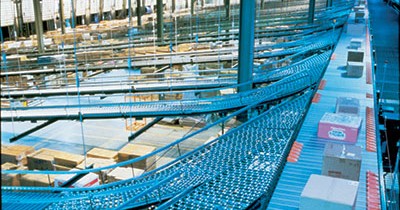Guest Commentary – Distribution Operations: Market Leader or Laggard? Part 2 Be Proactive and Thrive
by Charlie Rizzo
Note: This is the second of a three-part blog regarding competitive leadership in distribution center (DC) “order drop to out the door” cycle time performance.
Be Proactive and Thrive
If your goal is to be the leader in your competitive space, you must begin with a cold and hard assessment of your current capabilities, and then identify and prioritize those areas where you need to immediately improve.
In this installment, we’ll look at increasing customer expectations and competitive pressures that expose potential weaknesses of your fulfillment processes and procedures. The next and concluding segment will focus on automation, controls and software which may have aged and are now ineffective.
Here is a starter list of issues – processes and procedures – you should include when evaluating your DC operations:
Overtime
Undesirable or unplanned overtime to meet routine customer expectations progressively erodes profit margin and staff morale. This is not the planned overtime that is necessary and intelligently used to handle peak periods as part of your overall utilization and operational strategy. Rather, these are the too frequent days when “something does not go right.” This usually occurs because there is no “buffer time” at the end of the day to efficiently handle exceptions or possibly because the appropriate due diligence was not applied early enough to deploy associates to the more critical areas.
Order cutoff time
Your customer service group may be saddled with an order cutoff time for same-day shipment that may chase your customers elsewhere. The reasons that you cannot move this to a later time can be many, including: current systems cannot process orders quickly enough; inability to effectively track order progress once dropped; inability to respond quickly to new order drops; carrier pickup time is not late enough; etc. These obstacles need solutions, because your competition is moving their times to later in the day.
Inelastic capacity
Running close to or at capacity, the primary reason orders get out is the daily “heroics” of your dedicated DC staff and managers. Most upper level managers are blissfully unaware of the looming corporate risk of this scenario until important shipments slip. Shipping and sales goals are being attained, so “all is well.” This is a very common reality in growing companies and even in mature enterprises which are, nevertheless, very much impacted by changing order profiles. When your unit cost per item shipped grows relentlessly and you have remained static in process methods, you may be nearing this point.
Extending order shut-off time
One of the best ways to grow volume organically and help ensure a competitive edge is to push your incoming order shut-off time to later in the day while still shipping that same day. There are still companies using a noon shut-off when the competition is at 3 p.m. or later. The survivors and growth companies of tomorrow are routinely doing this, and you must make fully coordinated internal changes to achieve this status in your operation. If you want to sample your competitors on this criteria, do a Google search of their shut-off times or just call their customer service line and inquire.
Carrier negotiations
A key to achieving a later order cutoff is negotiating with your carriers to push back their pickup times. A simple agreement to do some pre-sorting of outbound shipments or going to multiple pickup times per day may help, or it may just require ongoing discussions with your current carriers and perhaps your “consideration of alternates.” Be aware: shippers in all industry groups in your immediate area are negotiating and achieving this, perhaps to your detriment.
New item visibility
Do your inbound receipt processes allow for visibility of new items by customer service shortly after arrival on the inbound dock? If not, you need to look at your receiving software. Even though DC staff may be unable to immediately include them in a new order, you definitely need to have visibility by customer service. You must be able to systematically account for these new items, and, of course, receive them before you can pick them for an order.
A candid (perhaps painful) critique of these issues may lead to an equally forthright appraisal of your automation and its supporting systems. More about that next time.
Charlie Rizzo is Program Director, Strategic Accounts with MHI Member FORTE





